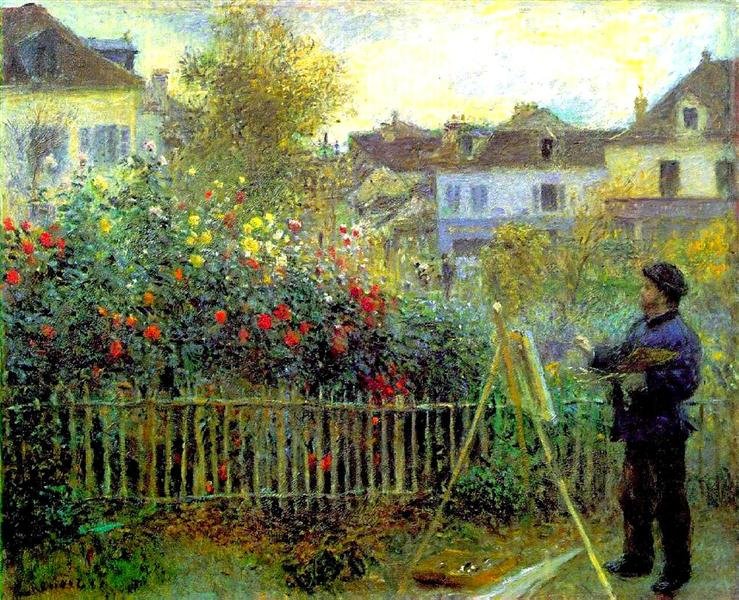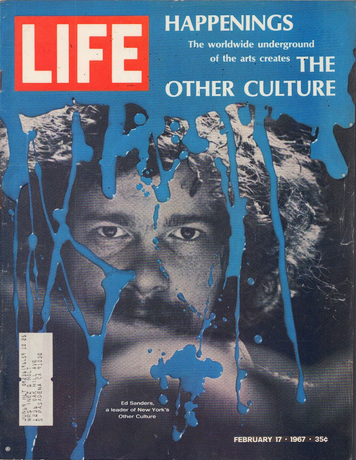The Invention Path to Plein Air and Impressionism
By Chris Munkholm
In the world of art, to paint en plein air style signifies the technique of painting in the outdoors. Not sitting in a studio. Certainly not painting from a photograph, memory, or imagination. To paint en plein air, the artist is present in the depicted scenery, immersed in that palette of nature, with tones illuminated by the sun and season of the moment.
Prior to the mid-19th century, few artists painted outdoors, including those who produced landscapes. Pierre-Henri de Valenciennes (1750-1819) and John Constable (1776-1837) both urged their students to draw and paint directly from nature but leaving the studio had its technical challenges. Artists were not mobile because their tools were not mobile.
Were these trees inspired by broccoli? Thomas Gainsborough, Road to Market. Gainsborough also painted landscapes, but it was said that he often “painted at night by candlelight, using a tabletop arrangement of stones, pieces of mirrors, broccoli, and the like as a model.” —Michael Rosenthal, Thomas Gainsborough. Grove Art Online. Oxford Art Online. Oxford University Press.
Thomas Gainsborough’s Pig Bladders
Pig bladders of paint were found at Gainsborough’s 18th century house in Sudbury England, after hundreds of years gathering dust.
Thomas Gainsborough (1727-1788), the celebrated portrait artist, painted his immobile subjects as they sat for long poses in his studio. It was essential for Gainsborough to work in his studio, near the bench where the oil paints were mixed from crude pigments, purchased from merchants, and then formulated with linseed oil. Any batches of oil paint were stored in the only 18th century packaging available to an artist: pouches made from pig’s bladders and sealed with string. To access the stored paint, an artist would pierce the bladder and squeeze out a portion onto his paint palette.
The pig bladder storage method suffered from many impracticalities. They were permeable which could lead to dehydration of the mixture. The bladders sometimes burst due to internal pressure buildup. And most tedious, there was no easy cap to remove and replace: artists had to reseal a pierced bladder with a puncture repair kit.
John Goffe Rand
It is a truism that Necessity is the mother of Invention. The artists of the early 19th century were at their wit’s ends dealing with messy, bursting, and likely odoriferous pig bladders. John Goffe Rand, (1801 – 1873), born in Bedford, New Hampshire, eventually moved to London in his pursuit of a career as a portrait painter.
Left: John Goffe Rand, 1836. Self-portrait. Right: Illustration from U. S. Patent No 2,252. Improvement in the Construction of Vessels or Apparatus for Preserving Paint. Issued to John Goffe Rand, September 11, 1841.
While considered a mediocre artist, Rand earned a legendary place in the annals of art history as the acknowledged inventor of the collapsible artist’s paint tube. His first patent, Improvement in the Construction of Vessels or Apparatus for Preserving Paint, was issued by the United States Patent Office, September 11, 1841, Patent No 2,252. And just as important as the invention of the tube, Rand also invented the screw cap.
The technical challenges were many. Rand needed a tubing material that would not dissolve into the paint mixture, and he eventually selected tin. The tin material also had to be constructed of a thin, malleable thickness that could roll up without cracking and exposing the paint to air. Once these technical challenges were solved, Rand’s collapsible tubes enabled the first long storage of pre-mixed oil paint. And with his invention of the screw top, the devices could be repeatably opened and sealed.
Gustave Courbet, Bonjour Monsieur Courbet (1854) Gustave Courbet depicts himself with all his painting gear in his pack, greeting friends on his way to paint out of doors.
The collapsible, airtight paint tube was a monumental game changer. Artists now had their technology passport, liberating them from the studio and enabling a migration into the countryside, along the coasts, and across urban outdoor and indoor scenes as well. For the first time in history, it was practical to produce a finished oil painting on-site, whether in a garden, a café or in the countryside.
Synthetic Pigments
Cerulean blue is cobalt-(II)-stannate with the formula of CoSnO3.The pigment is stable and does not change under illumination.
A second important technology breakthrough in the 19th century was the invention of synthetic pigments. Until then, painter’s pigments were derived from natural sources, some of which were rare and expensive. Ultramarine, a pigment derived from the lapis lazuli stone, was so expensive that Michelangelo could not afford the pigment, which is the given reason that his painting, The Entombment, was left unfinished. Vermeer mired his family in debt just to have enough of the prized pigment.[1] Because of these high costs, European painters depended on wealthy patrons to underwrite their supplies.
With the 19th century advances in the science of chemistry, chemists could finally delineate the chemical structures of natural pigments. It then became possible to synthesize the pigments in the laboratory rather than extracting them from rare natural commodities. Eventually, chemists produced synthetic pigment batches which were more pure, more consistent, and much less expensive than the natural pigments. Chemists also invented new pigments which could not be found in nature. Many of these synthetic colors are popular in today’s paint palettes: Prussian blue. Cerulean blue. French ultramarine. Tartrazine yellow. Chinese white. Alizarin.
The Essence of Impressionism Made Possible
Rand’s paint tubes could now be filled with a new and wide assortment of vibrant colors, which eventually became identified with the aesthetics of the plein air movement. In the prior studio era, the practice of mixing pigments, or releasing them from a pig bladder, was time-consuming with paints quickly drying out. Artists typically planned their work around a few colors during a painting session. They would then focus on a single area of the canvas, using only the colors they prepared for that day.
Claude Monet, End of the Summer by the master of the new outdoor painting style.
But once the artist had a set of tubes in a wide range of pre-mixed paints, to carry on their adventures beyond the studio, the modus operandi was also redefined. The artists could now work on an entire impression, recording the fleeting and changing colors they observed in nature. This way of working became the essence of the new Impressionist art form. “Don’t paint bit by bit.” Camille Pissarro advised, “but paint everything at once by placing tones everywhere.”
Claude Monet, Impression, Sunrise, 1872. oil on canvas. Musee Marmottan Monet, Paris. This painting launched the movement's name.
Impressionism Follows Plein Air
The artists who became known as the Impressionists initially seemed to violate all the sacred academic rules of structured composition and realistic detailing. And their preference to paint outdoors broke with the tradition of painting still lifes, portraits, and even landscapes in a studio. But they were painting new and more nuanced observations of nature. “The Impressionists found that they could capture the momentary and transient effects of sunlight by painting outdoors or en plein air.”[2]
The public, and eventually the critics, came to accept that the Impressionists had a fresh approach to painting landscapes and nature. They were recreating “the sensation in the eye that views the subject”, rather than reproducing a subject or scene. The Impressionistic painters gave viewers a more affecting experience of nature’s visceral visual impact. Once established, Impressionism became a precursor of many painting styles, including Post-Impressionism, Fauvism, and Cubism.
The invention of John Goffe Rand, a simple device by today’s standards, became the technology upon which these epic movements in art history rested. The son of Pierre-Auguste Renoir quotes his father as saying: “Paints in tubes, being easy to carry, allowed us to work from nature, and nature alone. Without colors in tubes, there would be no Cézanne, no Monet, no Pissarro, and no Impressionism.”[3]
Pierre-Auguste Renoir, Monet Painting in His Garden at Argenteuil, 1873
References
1. https://www.theparisreview.org/blog/2015/06/08/true-blue/.
2. Impressionism, Wikipedia.
3. Jean Renoir, Renoir: My Father (Mercury House, 1988), p. 734.
Feature Articles



















Bing McGilvray
There is a singular vitrine containing sixteen paper mâché figurines by Harry Martin (1927-1984} at CAM’s Campus on the Green in the Janet and William Ellery James Gallery. It might go unnoticed, pushed aside by …